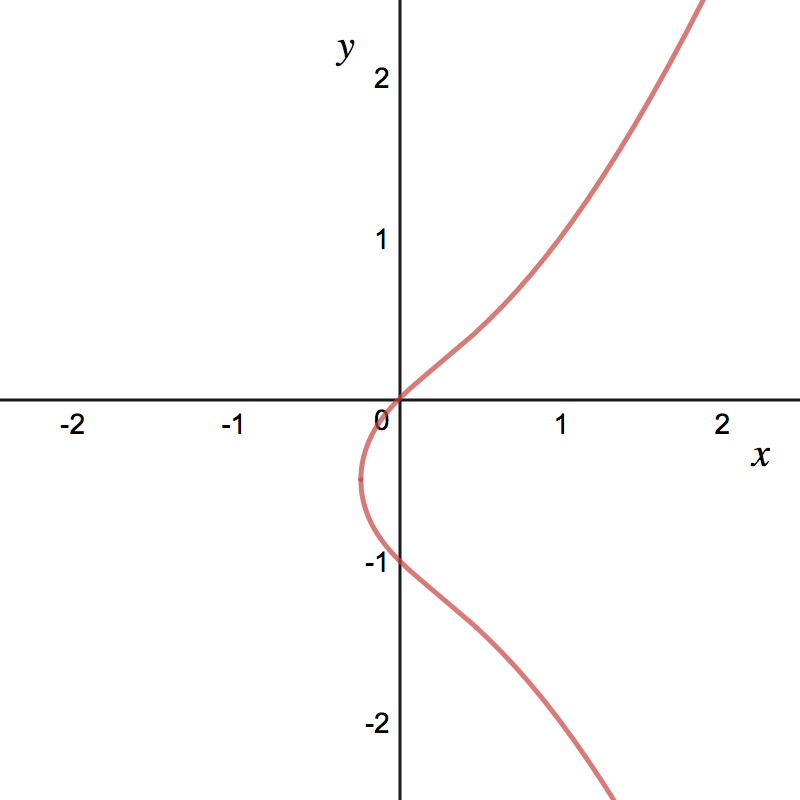Throughout this module, if something does not exist, write DNE in the
answer box.
Recap Video
Take a look at the following video which recaps the ideas from the section.
_
Example Video
Below is a video showing a worked example.
Problems
Idea: Remember, the idea of implicit differentiation is the following. We will
have some relation with ’s and ’s, such as the following:
As we see in the following graph, this is not the graph of a function.
However, we still want to look for slopes of tangent lines. What we do is say,
near a point, that this relation gives in terms of (zoom in far enough so that
it looks like a function). In this case, you can solve for , though it won’t look
too nice. So we want to get around this. This is what implicit differentiation
is used for.
If , find at the point .
We will assume that, near the point , that is a
function of . We will write or to help us remember this. So the relation
above says
We will now take the derivative of both sides:
On the left side, we will need to use the chain rule. Notice that is a
composition as follows:
So the derivative of is , or for short. Similarly, the derivative of is . We can
differentiate the right side normally. Therefore, we have
Solving for gives
Plugging in gives
Find the equation of the tangent line to at the point .
We have the slope
from the previous problem, and we have the point . Therefore, the line
is
If , find .
We repeat the process of the first implicit problem above. We can
read this as, for example,
Now we see that if we were to differentiate this with respect to , the
second term would require
power ruleproduct rulequotient
rule
. Differentiating both sides with respect to gives
(Notice the use of product rule in the second term and chain rule in the third
term.) Solving for gives
Find all points on where the tangent line is horizontal.
In the previous
problem, we found
To see where the tangent line is horizontal, we need to set . This will happen
when
A fraction is zero if the numerator is zero, so we can say when . To get the
actual points, we can plug this into the original relation:
or . Solving gives, in increasing order,
Since , we get two points:
If , then the equation of the tangent line to is
Using the ideas of implicit differentiation, we can find the following
derivatives:
The equation of the tangent line to at the point is:
